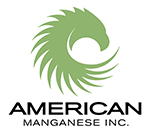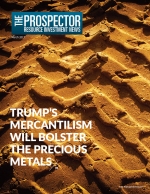
By Christian Vakenti
Of all the hurdles that electric cars have had to overcome, one of the most annoying, and persistent, has been what to do with the batteries when the vehicles reach the end of their service life.
The shell of an electric vehicle (EV) is much the same as that of any gas-powered automobile: a mix of metal, plastics and some fabric. Comprehensive recycling programs exist to deal with most of those components. But the batteries pose a different, and heretofore perplexing problem.
Enter American Manganese Inc. (AMI), who say they have the answer to the world’s emerging EV market disposal problems. When it comes time to replace the massive lithium batteries required to power say, a Tesla S model or a Chevy Volt, American Manganese will utilize their patented process to recycle them.
Previously, lithium ion batteries were either shredded or smelted down, which wasted the vast majority of metals that make up the powerful batteries. These materials would then end up either in expensive long term storage (not ideal) or a land fill (an ecological and marketing disaster).
This has been a major sticking point in the argument against electric vehicles, as both regulators and potential buyers of the product have realized that the current practice is far from sustainable. It is largely due to this lack of proper recycling methods that has made EV’s actually worse for the environment than buying and running a similar-sized gasoline engine. A fact not lost on the Prius-minded crowd.
All of that is about to change, however.
Based upon AMI’s ground-breaking technology, a new process allows the recovery of cathode materials from spent Li-ion batteries.
Having successfully completed proof of concept testing, AMI is working with Kemetco Research Inc. to complete recycling bench tests on nickel, aluminum and manganese cathode chemistries and cobalt ores. Work to date suggests high recovery rates (approaching 100%) of materials at industry-standard purity levels, ready for reuse.
These recycled materials can and have been used to make more Li-ion batteries, vastly increasing the profitability of EV manufacture while at the same time massively decreasing the environmental impacts of creating a new battery.
For EV marketers, this is a technological dream come true: finally they can honestly say to potential buyers that by purchasing their product they will substantially lower that consumer’s global footprint and in doing so, make the world a better place to drive and to live.
So, where’s the downside?
According to Larry Reaugh, CEO of AMI, there isn’t one.
“We put our focus on recycling, or what we call the mining of batteries,” Larry said in an article published by The Financial Post.
The dramatic shift in focus has completely changed how, and where AMI does business. Mining exploration in Arizona and northern BC has put on hold, perhaps indefinitely, while the company re-tools and and re-gears to get the new technology off the ground.
This kind of dramatic sea-change usually spells at least a temporary dip in stock price and often an outright revolt in consumer confidence as investors question exactly what kind of company they’ve parked their funds in. But AMI has no regrets.
“Since our refocus on lithium-ion battery recycling technology, the company traded an astounding quarter of a billion shares in just four months and has increased market capital by 25 times since the beginning of this year (2016). Clearly we have hit on a popular concept that is very marketable,” says Reaugh.
At least some of the praise belongs to Kemetco Research Inc. (KMI), one of Canada’s largest research companies. From their state of the art, 18,000 square foot research lab in Richmond, BC, KMI provide scientific expertise in the fields of Specialty Analytical Chemistry, Chemical Process and Extractive Metallurgy.
“The key to the technology is a processing loop that deals with the reagent by-products, water recycling in an energy efficient manner, and maximizing recovery of cathode material which could not be achieved in a single pass,” says Norman Chow, president and CEO of KMI. “The process eliminates the need for heat and furnaces, as the recovery of the metals take place at ambient temperatures. The result is a cleaner, environmentally sustainable recycling alternative to current disposal methods.”
Where do we go next?
The world market for EV batteries in 2015 was $7.8 billion. It’s expected to hit $30 billion in seven years. The cathode component is the most expensive (25%) part of a battery due to the cost of cobalt, nickel and lithium.
AMI’s process slashes those costs, while easing the material demands from the quickly growing EV battery market.
“As a recycler, AMI has the potential to become a primary producer and help reduce the reliance on less-than-friendly jurisdictions in Africa, South America and elsewhere in the world,” says Reaugh.
If Li-ion batteries was the best thing to happen to electric vehicles, then American Manganese is the best thing to happen to Li-ion batteries. And that’s a loop that just makes environmental, and financial sense.
To read the rest if the March Issue of the Prospector News go here
http://theprospectornews.com/wp-content/uploads/2017/02/March-2017_web.pdf
Subscribe to the Prospector News here
http://theprospectornews.com/?page_id=977

